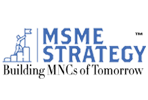10-Point Guide for SMEs: Essential Accounts Receivable (AR) Practices
Managing accounts receivable (AR) effectively is critical for ensuring healthy cash flow and maintaining financial stability for small and medium-sized enterprises (SMEs). Below is a comprehensive guide, incorporating key points on the importance of AR, common challenges, and how technology can help businesses improve AR processes.
1. Automate and Consolidate Receivables
Automation is a game-changer for AR management. Implement automated systems to send invoices and reminders, match invoices with payments, and post them quickly. Ensuring all parties are aligned on payment expectations early in the relationship is critical. This minimizes payment delays and disputes.
Tip: Use software to track deadlines and automate follow-ups to ensure you get paid on time.
2. Define Clear and Flexible Payment Terms
Set consistent payment terms for all customers but ensure flexibility for long-term clients. The standard “Net 30” may be appropriate but offering early payment discounts like “2/10, Net 30” (where customers get a 2% discount for paying within 10 days) can speed up payments.
Tip: Adapt payment terms for larger clients to balance cash flow while accommodating extended terms like 90 days when necessary.
3. Simplify Invoice Payments for Clients
Clear, accurate, and detailed invoices are essential. Make it as easy as possible for clients to pay by offering multiple payment options like ACH transfers, credit cards, and mobile payment methods. Technology simplifies this process, reducing human error.
Tip: Avoid common invoice rejection issues by ensuring all necessary details are included.
4. Follow-Up Fast on Past-Due Receivables
Act immediately on overdue payments. The longer an invoice remains unpaid, the lower the chance of recovering the full amount. Automated systems can notify you of late payments, prompting faster follow-ups.
Tip: Contact clients promptly on the day the payment is overdue to minimize escalation.
5. Offer Multiple Payment Channels
Providing multiple payment options speeds up the receivables process. SMEs should consider accepting credit and debit cards and integrating mobile payment options.
Tip: Use online payment gateways to streamline the process and avoid payment delays.
6. Monitor AR with Aging Reports
Create AR aging reports to monitor payment statuses. These reports allow businesses to see which invoices are overdue and by how many days (e.g., 0-30, 31-60, 61-90 days). This visibility helps prioritize overdue accounts for faster follow-up.
Tip: Review these reports regularly to anticipate cash flow issues before they become critical.
7. Charge Interest on Late Payments and Implement Penalties
Introduce late payment penalties to discourage delays. A structured policy, communicated clearly to clients, can reduce payment delays and encourage timely payments.
Tip: Add a gentle reminder of late fees in follow-up communications when payments are overdue.
8. Leverage Technology for Cash Flow Insights
Utilize real-time analytics and AR management software to get a clear view of your financial status at any given time. With these tools, businesses can monitor cash flow and take action before issues escalate.
Tip: Cloud-based platforms can provide insights into customer payment behaviors and help forecast potential risks.
9. Diversify Your Client Base
A concentrated client base can expose your business to cash flow risks if a major client delays payment. Strive to diversify your client portfolio to avoid dependency on a few large accounts.
Tip: Screen new clients’ creditworthiness and establish clear payment terms upfront to reduce your risk.
10. Consider Payment Plans for Clients with Cash Flow Issues
For clients facing cash flow challenges, offering structured payment plans can help collect outstanding payments while maintaining good customer relations. Make future sales on a cash-on-delivery (COD) basis until the balance is cleared.
Tip: Formalize payment plans in writing to ensure both parties are aligned.
How Technology Can Help
Technological tools, including AR software and cash management systems, streamline the entire AR process by automating invoicing, collections, and payment tracking. Automation ensures timely reminders and payments, improving efficiency, reducing the risk of human error, and enhancing your company’s financial health.
If you need help, we are just a click away.
#MSMEStrategy #ARManagement #CashFlowMatters #Automation #SmallBusinessGrowth #SMETips






